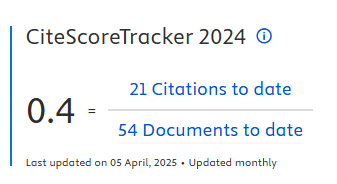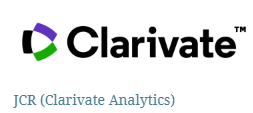A year of transformation and knowledge
DOI:
https://doi.org/10.5585/iji.v8i3.18812Keywords:
A year of transformation and knowledge.Abstract
The pandemic that transformed our lives in 2020 brought important reflections on way of seeing the world demanding new skills and behaviors to interact in an environment so common to innovation - virtual environment. In innovation processes, digital transformation that modifies, alters and creates ways of doing things, declares itself and presents itself as facilitating vehicle, also of interpersonal relationships, requiring us to learn to relate in different ways through digital world, using creativity to overcome social, institutional, political, religious, economic obstacles, among others.
In science, researchers strive to understand or explain some transformational impacts and seek a perfect adaptation for transferring and exploitation of appropriate knowledge for each eminent need. However, we are still halfway there.
Some relevant topics in academia also explored by IJI - International Journal Innovation, such as, innovative entrepreneurship, innovation and learning, innovation and sustainability, internationalization of innovation, innovation systems and digital transformation are now undergoing a new sieve, a new look at understanding of disruptive effects inherent to this theme on transformation and knowledge. A new window has opened in digital age, provided by new world context.
In the past, a commonly observed resistance to including innovation in daily processes, and not only in organizational sphere, are now mandatory and our survival in society depends on them. So, what do we see? We can simply call it transformation, but if we broaden a perspective of events in the year 2020, we risk saying that we do live a cotransformation, that is, a rhythmic and continuous, joint and effective learning in creation of value in all global social spheres. It is no longer about transforming a process or creating a system to achieve desired performance, it is about integrating collective, learning by sharing, changing to be able to transform and, all of this, through an increasingly disruptive world.
We highlight Moreira, Teixeira and Locatelli (2020) about influences of motivational goals, confirming Schwartz's (2005) theory that groups differ significantly in relative importance they attach to their values, that is, individuals and groups have priorities or axiological hierarchies different from values (Calvosa, Serra, & Almeida, 2011). This understanding must support our challenges regarding how to address a co-transformation and transmission of knowledge to future generations, prioritizing care for preservation of our planet, human relations, adaptation of knowledge to current realities and, above all, ability to innovate at any time.
As presented by Falaster et al. (2020) it is not for us to assign a mathematical value to life and health or to guide our research by addressing political agendas, nor to distort theory, method and argumentation to suit any situation. What should motivate us, especially in scientific research, is the understanding and strategic responses in times of crisis: our adaptation and compliance, stress with its effects on decision-making on acquisition of knowledge to co-transform and innovate. For this reason, we emphasize that we are in the middle of road because there are still notorious forces that demand permanence of more stable and static social models. Innovation takes on another level. With its disruptive character, it will continue to build future scenarios in improving performance of society's demands (Pol & Ville, 2009) through process of cotransformation emphasized here.
Efforts and studies aimed at innovation point to relationship networks as important channels for increasing efficiency (Pio, 2020). This is one of evidence regarding the need for a rhythmic and continuous, joint, and effective interconnection for cotransformation. We are not only pointing to innovation as a support for cotransformation, but as something inevitable in practical life of future generations.
We must advance how to promote improvements that bring productivity and effectiveness to social relationships through innovation. This will facilitate our insertion in this “new normal” presented in almost all groups of society. We already know that we need to change at a fast pace, but we often get lost in timing of things, that is, the right time for change. Therefore, we must learn to work among diversity, producing new values that take our society to a new level of civility. And all of this translates into different ways of knowing and learning, transmitting, and assimilating, stretching, and making flexible.
In fact, it is necessary to identify elements that determine existence of more dynamic capacities, such as, for example, set of behaviors, skills, routines, processes and mechanisms of learning and knowledge governance aimed at cotransformation. Articulation of these elements can result in varying degrees of innovation and dynamism and can manifest themselves in a more intense or more traditional way, where virtual can be more consolidated. Anyway, this is just an indication that, in a cotransformation model, all indicators are reflective (Meirelles & Camargo, 2014).
Innovations can lead us to co-transformation, reconfiguring activities requiring a greater evolutionary flow of existing capacities and requiring new experiences and management of these more dynamic capacities. Therefore, research must change its perspectives by establishing links between these capacities, to identify and react to innovations that are a contemporary landmark in recent history.
The extent of cotransformation depends on some factors, such as perceived environmental pressure (Helfat et al., 2007) and adaptability (Madjdi & Hüsig, 2011) that vary in degree, from small adaptations to major revisions or even a reconfiguration (O'Reilly & Tushman, 2008). Generally, we know they are interconnected components that specify how we can survive all dynamism and disruption that exists in the world.
In this context, the most important thing is not to know what will be the results of what you want, but to intensely take advantage of construction path of what you can have with appropriate use of capabilities to co-transform and innovate.
We hope that in this editorial we have promoted important reflections on understanding of cotransformation, inspiring our readers about new knowledge and expanding a debate for better direction of academic and business society. The role of knowledge and transformation awakens a world of possibilities to be explored, which is why we are still halfway there.
Downloads
References
Calvosa, M. V. D., Serra, F. A. R., & Almeida, M. I. R. (2011). Quais são as prioridades axiológicas dos líderes empresariais? Análise dos seus valores pessoais a partir do inventário de valores SVS de Schwartz. Anais do Encontro de Gestão de Pessoas e Relações de Trabalho - EnGPR, João Pessoa, PB, Brasil, 3.
Falaster, C. D., Martins, F. S., Storópoli, J. E., & Ramos, H. (2020). How can management scholars contribute with research in the COVID-19 crisis? Revista Ibero-Americana de Estratégia, 19(2), 1-5.
Helfat, C. E.; Finkelstein, S.; Mitchel, W.; Peteraf, M.; Singh, H.; Teece, D. J. & Winter, S. G. (2007). Dynamic Capabilities: Understanding Strategic Change in Organizations. Oxford, UK: Blackwell Publishing Ltd.
Meirelles, D.F. & Camargo, A.A.B. (2014). Dynamic Capabilities: What Are They and How to Identify Them? RAC, 18, Edição Especial, art. 3, 41-64.
Madjdi, F., & Hüsig, S. (2011). The response strategies of incumbent mobile network operators on the disruptive potential of public W-LAN in Germany. Telecommunications Policy, 35(6), 555-567.
Moreira, P. R. B., Teixeira, A., & Locatelli, O. (2020). Valores motivacionais nas organizações: um estudo com diferentes grupos de trabalho de servidores públicos da educação. Revista Ibero-Americana de Estratégia, 19(3), 116-145.
O’Reilly III, C. A., & Tushman, M. L. (2008). Ambidexterity as a dynamic capability: Resolving the innovator's dilemma. Research in organizational behavior, 28, 185-206.
Pio, J. G. (2020). Effects of Innovation and Social Capital on Economic Growth: empirical Evidence for the Brazilian Case. International Journal of Innovation, 8(1), 40-58.
Pol, E., & Ville, S. (2009). Social innovation: Buzz word or enduring term? Journal of Socio Economics, 38(6), 878–885.
Schwartz, S. H. (2005). Valores humanos básicos: seu contexto e estrutura intercultural. In: Tamayo, A.; Porto, J. B. (Orgs). Valores e comportamentos nas organizações, Petrópolis, RJ: Vozes, 21-55.
Downloads
Published
How to Cite
Issue
Section
License
Copyright (c) 2020 Angélica Pigola, Eliane Martins de Paiva, Priscila Rezende da Costa, Isabel Cristina Scafuto, Marcos Rogério Mazieri

This work is licensed under a Creative Commons Attribution-NonCommercial-ShareAlike 4.0 International License.
- Abstract 748
- PDF 304
- PDF (Português (Brasil)) 236











